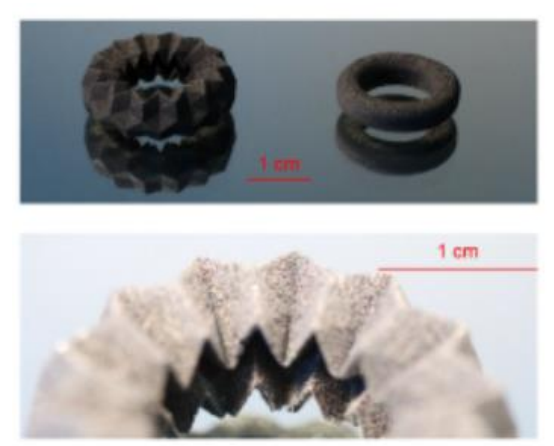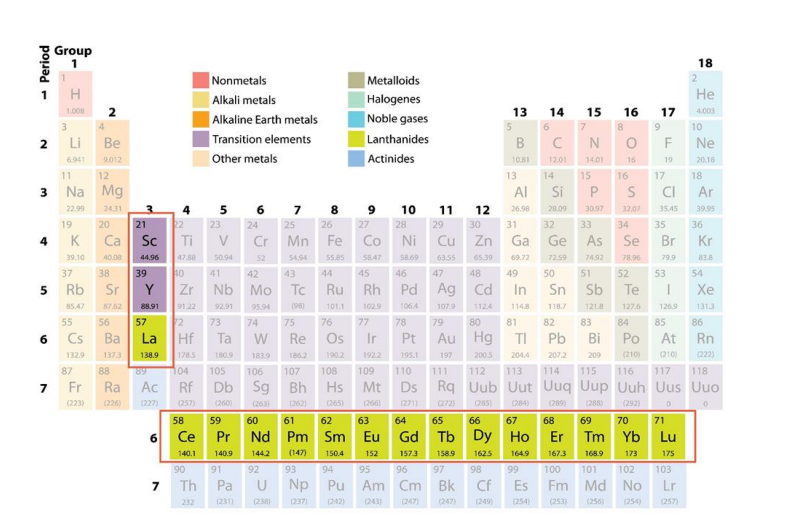In ‘Analysis of 3D printed NDFeB polymer bonded and organic based magnets,’ Chimaobi Ibeh—a thesis student from New Jersey Institute of Technology—explains that industrial users in many cases today are more interested in miniaturization of electronics, allowing for maximum latitude in design as well as reducing cost, and wasted materials. Ibeh’s goal is to promote additive manufacturing processed with NdFeB bonded and organic based magnetic materials, hoping to ‘open doors to new applications in magnetism.’
“Recent research studies have made magnets the future candidates for new sensor and actuator applications, electric motors and smart materials/systems,” explains Ibeh.
“The improvement of permanent magnets (PM) have shown the ability to slow down the energy consumption and increase energy efficiency. PM with the combination of the advancements of semiconductor electronics such as MOSFET (metal oxide semiconductor field effect transistors) and IGBT (insulated gate bipolar transistors) have brought 3 innovations to the electric motors, power electronics and intelligent controllers.”
Ibeh also adds that with greater knowledge about SmCo and NdFeB, common magnetic materials, energy efficiency can be greatly improved. Nd2Fe14B is the most powerful PM available in the world but is extremely costly. In terms of techniques used to create magnets, AM processes have good potential, beyond the obvious benefits of prototyping with plastics like PLA and ABS. Miniaturization is in greater demand, and Ibeh sees the application of AM methods opening the door to applications like sensors.
“Organic based magnets are a new emerging class that bring unique material properties and will further the development in magnet fabrication,” states the author, also going on to point out that extrusion printing of NdFeB bonded magnets has been successful previously.
NdFeB is an RE-Fe-B bonded composite, consisting of melt-spun RE-Fe-B powder and polyamide (PA12) binder, and offering the ‘best overall magnetic performance in the classes of hard magnets.’ Previous research and experimentation with net shape NdFeB magnets resulted in complex, small-scale designs, which the author points out is hard to achieve with other techniques—especially because the alloy is delicate. Parameters must be just right to achieve the correct density and quality.
In attempting to fabricate magnets from RE organic materials, researchers seek the following properties:
- Low density
- Transparency
- Electrical insulation
- Low-temperature
“The next big challenge for scientists is to create many new high-spin molecules that possess energy gaps, an order of magnitude greater, at room temperature as well as kinetic stability that rivals the most stable organic monoradicals,” concluded Ibeh.
“Combining the development of organic based magnets with AM methods will further bring new and interesting innovation to the technological world we live in.”

The photograph of printed magnets of various shapes. The left object, expanded view on the bottom image, demonstrate the full power of 3D printing very complex shape, a novel functionality to the hard magnets
Individuals new to 3D printing may be floored by the countless innovations being introduced into nearly every industry around the world today, but in delving further, the depth with which the science of materials is being explored—and mined—is even more fascinating. And the learning continues for users on every level. Composites are becoming more popular than ever, from materials meant to promote thermal management to bioprinting, along with efforts to further miniaturization. Learn more about magnetization in 3D printing here. What do you think of this news? Let us know your thoughts! Join the discussion of this and other 3D printing topics at 3DPrintBoard.com.
[Source / Images: Analysis of 3D printed NDFeB polymer bonded and organic based magnets]Subscribe to Our Email Newsletter
Stay up-to-date on all the latest news from the 3D printing industry and receive information and offers from third party vendors.
You May Also Like
3D Printing News Briefs, April 13, 2024: Robotics, Orthotics, & Hypersonics
In 3D Printing News Briefs today, we’re focusing first on robotics, as Carnegie Mellon University’s new Robotics Innovation Center will house several community outreach programs, and Ugogo3D is now working...
Rail Giant Alstom Saves $15M with 3D Printing Automation Software 3D Spark
3D Spark has entered into a three-year deal with the rail giant Alstom. Alstom, a transport behemoth with annual revenues of $16 billion, specializes in the manufacture of trains, trams,...
Meltio Expands Global Reach with New Partnerships in the Americas and Europe
Spanish 3D printing manufacturer Meltio has expanded its sales network across the globe. With the addition of three new partners in the United States, Brazil, Argentina, and Italy, Meltio aims...
3D Printing Webinar and Event Roundup: April 7, 2024
Webinars and events in the 3D printing industry are picking back up this week! Sea-Air-Space is coming to Maryland, and SAE International is sponsoring a 3D Systems webinar about 3D...



































